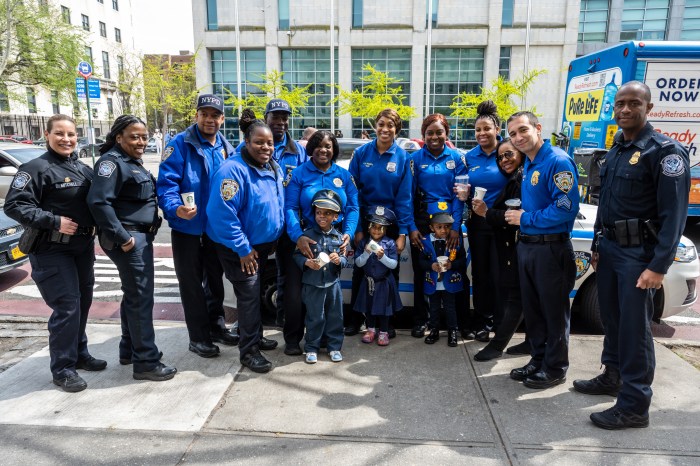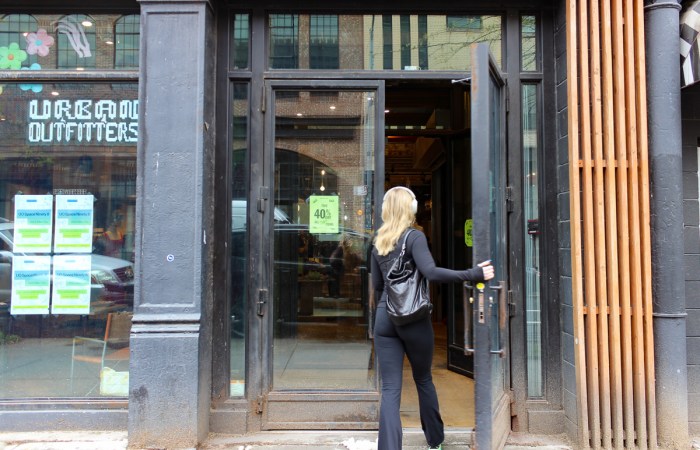
It was a feel-good atmosphere in front of City Hall on Monday, with an unusually large crowd gathering for a rally to “save the arts,” as Council Member Jimmy Van Bramer put it.
Broadway stars, including actors from “The Lion King,” shared songs of protest and spoken word poems. Musician David Byrne attended. Dozens of supporters were turned away from the City Hall exterior due to space constraints. They relocated in the park opposite where they played drums and trombones while the politicians spoke.
It was a protest against the almost laughable part of President Donald Trump’s proposed budget that slashes funding for a few cultural institutions, including the National Endowment for the Arts and the National Endowment for the Humanities. Laughable because, according to city comptroller Scott Stringer, the NEA represents just 0.0037 percent of federal spending.
Small cuts with huge symbolic value
The proposed cuts may be red meat to Trump supporters who think taxpayer support of the arts is a waste of money. But the final decision will go to legislators, who will negotiate actually turning Trump’s budget into a reality.
Rally speakers expressed faith in the ability of protest to block cuts like these, citing recent health care battles. This potentially complicated path forward for the cuts might explain the high spirits Monday. But mostly, the rally was a show of strength for one of NYC’s vital jewels and economic engines. In 2016, while the NEA tossed NYC a helpful $14.5 million, the City Council alone allocated $320 million in arts funding — which is to say that the arts will chug along here with or without Trump. What is less clear is what exactly that art will look like.
It could be, for example, that readers and viewers as well as artists will want to retreat within and away from direct electoral politics: pure entertainment, of the lighter Broadway or Hollywood variety. Nostalgia, good dance music and car chases.
Or it could mean the kind of art that City Council Speaker Melissa Mark-Viverito might have been thinking about Monday, art that leads to a “greater understanding” of the world: plays or fiction or musicals that investigate how people live together, strive or suffer. Illuminating those lives maybe makes us more compassionate, a few steps removed from the voting booth.
But will the sense of re-energized political engagement apparent in many of the rallygoers make its way into the art that people typically see, read or hear?
How will art respond to the age of Trump?
At the edge of the rally, editor of the magazine Poets & Writers Kevin Larimer suggested that “dystopian literature” might become even more popular. Larimer was confident that writers and other artists would react to Trump and the “threat” he represents: “Art responds to reality.”
Some reality, though, has a hard time making it into all art forms equally. The novelist Amitav Ghosh made this point in his book on culture and climate change, “The Great Derangement,” which was published last year.
The “genre” literature of science fiction and speculative fiction has dealt with climate change for years. But seeking to explain why literary fiction rarely does the same, Ghosh notes that the literary imagination is mostly focused on individual humans, not on large epics or natural forces. And catastrophes don’t do well in the usual format of the novel: the events that mark unordinary times “are not easily accommodated in the deliberately prosaic world of serious prose fiction.”
It may be that writers and artists will have difficulty fusing all their current political thoughts and fears and dreams into their art when they are faced with the large-scale forces of American politics, glacial in their development and sometimes shocking in their fallout. Mark-Viverito called the decisions being made by the Trump administration “sheer insanity” when it comes to immigrants, for example. Easy to add global warming, criminal justice reform, and tax policy to what could be a long list. Where should artists look first?
They must look somewhere. In his book, Ghosh notes that the difficulties writers have writing about climate change are tied up in society’s trouble dealing with the actual problem.
The lack of imaginative attention to the issue leads to a lack of knowledge, solutions, and debate. If artists find it too hard to engage with society’s other thorny problems head-on, we’re in for trouble.

















